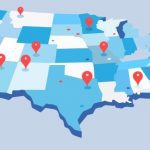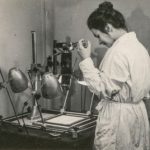 Technology
Technology  Technology
Technology  Humans
Humans 10 Everyday Human Behaviors That Are Actually Survival Instincts
 Animals
Animals 10 Animals That Humiliated and Harmed Historical Leaders
 History
History 10 Most Influential Protests in Modern History
 Creepy
Creepy 10 More Representations of Death from Myth, Legend, and Folktale
 Technology
Technology 10 Scientific Breakthroughs of 2025 That’ll Change Everything
 Our World
Our World 10 Ways Icelandic Culture Makes Other Countries Look Boring
 Misconceptions
Misconceptions 10 Common Misconceptions About the Victorian Era
 Mysteries
Mysteries 10 Strange Unexplained Mysteries of 2025
 Miscellaneous
Miscellaneous 10 of History’s Most Bell-Ringing Finishing Moves
 Technology
Technology Top 10 Everyday Tech Buzzwords That Hide a Darker Past
 Humans
Humans 10 Everyday Human Behaviors That Are Actually Survival Instincts
 Animals
Animals 10 Animals That Humiliated and Harmed Historical Leaders
Who's Behind Listverse?

Jamie Frater
Head Editor
Jamie founded Listverse due to an insatiable desire to share fascinating, obscure, and bizarre facts. He has been a guest speaker on numerous national radio and television stations and is a five time published author.
More About Us History
History 10 Most Influential Protests in Modern History
 Creepy
Creepy 10 More Representations of Death from Myth, Legend, and Folktale
 Technology
Technology 10 Scientific Breakthroughs of 2025 That’ll Change Everything
 Our World
Our World 10 Ways Icelandic Culture Makes Other Countries Look Boring
 Misconceptions
Misconceptions 10 Common Misconceptions About the Victorian Era
 Mysteries
Mysteries 10 Strange Unexplained Mysteries of 2025
 Miscellaneous
Miscellaneous 10 of History’s Most Bell-Ringing Finishing Moves
Ten More Extremely Unexpected U.S. State “Firsts”
It’s always interesting to see how American states led the way in various categories. Michigan can lay claim to being the first in automobile development and the car culture that is everywhere today. In that same vein, give California credit for being the first state to really go all-in on the freeway system that dominates American transportation nowadays. Colorado can lay claim to its pioneering marijuana legislation—and Washington, too. And, of course, no state can beat Delaware for being the first state to, well, become a state when it was first to ratify the Constitution!
But while there are plenty of notable and well-known state “firsts,” there are also a million strange ones. Recently, we looked over a series of strange and unexpected “firsts” on this very website, and that seemed to be a big hit with many of you. So, why not do it again? Below, you can read all about ten MORE strange, random, and even funny state “firsts” from American history.
Related: Ten Intriguing Facts about America’s First Murder Trial
10 California: Good Fortune!
There is one thing we know for sure: California can lay undoubted claim to the proud title of being the first state to invent and produce the fortune cookie. The question gets a bit thicker than that, though, when it comes to figuring out exactly where it happened within the Golden State.
Many historians believe that a man named Makoto Hagiwara created the very first modern fortune cookie when he was at the Japanese Tea Garden in San Francisco’s Golden Gate Park as early as 1914. After he came up with the idea and sketched out the plan, the cookies themselves were reportedly made by a local San Francisco bakery called Benkyodo.
But there’s drama! Down in Los Angeles, a man named David Jung claimed that he actually invented the fortune cookie in 1918 when he was the owner and operator of LA’s Hong Kong Noodle Company. He said that he was the one who came up with the concept and popularized it and that his San Francisco fortune foes simply took the cookie idea and then tried to retroactively claim they’d come up with it first.
For decades after that, it looked like there would be two competing fortune cookie origin myths. If you were from NorCal, you sided with Hagiwara, and if you were from SoCal, you sided with Jung. Perhaps that was the first great NorCal-SoCal debate that now gets carried out in sports rivalries and the like!
Fortune cookies are evidently some serious business, though. In 1983, the San Francisco Court of Historical Review took up the case to investigate. Their judgment came back in favor of Hagiwara, pointing to evidence that he was indeed first to market with the cookie. The city of Los Angeles cried foul, but it all sort of fizzled out from there.
Regardless, for the purposes of this list, California can undoubtedly lay claim to being the first state that made and dished out fortune cookies, even if the city of origin has been up for debate.[1]
9 Washington, D.C.: TV Time
The oldest regularly broadcasting television station in American history belongs not to a state but to Washington, D.C.! Back on July 2, 1928, a television station known as W3XK began broadcasting from a studio in the nation’s capital. Its broadcast didn’t carry very far—the signal could barely get into the outskirts of Maryland’s then-small-town suburbs just outside of northern D.C.—but it didn’t matter. It was a history-making affair all the same!
While earlier radio broadcasting companies had fiddled around with television a bit, including the network we now know as NBC, W3XK was the very first television station to broadcast a regular schedule. And so its inventor and owner Charles Jenkins and his hometown of Washington, D.C., get the “first” nod on this one!
If you’re looking for an actual state, though, we might be able to give this one to Maryland, too. After a couple years of broadcasting within Washington, Jenkins eventually moved the W3XK television studios to a small town in Maryland called Wheaton. The station pioneered the broadcast of a 48-line picture there, and then in 1930, it also pioneered the move to a 60-line picture.
The Great Depression hit Jenkins and his Charles Jenkins Laboratories company hard, though, and by March 1932, his television firm was liquidated. A radio broadcasting company acquired all the assets and then went bankrupt a few months later. RCA eventually bought out everything from W3XK in the ensuing mad rush, but they turned full-time to radio, and television moved fully to the backburner for another couple of decades.[2]
8 Hawaii: Bye Bye, Bags!
In May 2012, Hawaii became the first state in the U.S. to ban the use of plastic bags at grocery stores. The ban was taken on by leaders in various city councils around Hawaii for a few years before that. Maui officials, Kauai leaders, and others opted independently to ban the use and spread of single-use plastic grocery bags in establishments on their islands leading up to 2012.
Then, in late April 2012, the city council of Honolulu voted to put forth a ban on single-use plastic grocery bags all across Oahu. That motion carried through with ease at the council’s meeting that month, and on May 11, 2012, the plastic grocery bag ban was signed into law. All four of Hawaii’s County Councils fully followed suit, and the state thus underwent a complete plastic bag ban.
Now, it took a while for the ban to go into effect. In Honolulu’s case, the ban wasn’t officially enforced until 2015. In those three years, they intended to allow time for stores to get rid of their supply of plastic bags and major corporate grocery chains to redirect their plastic bag supply chains to other places. Plus, they wanted Hawaiians to get acclimated to shopping with reusable bags and give them time to adjust to the new normal with the ban on plastic single-use bags.
In turn, the anti-plastic pollution push quickly spread out from Hawaii to the rest of the country. Cities, municipalities, and states all over the nation ban plastic bags now. As of early 2024, eight states had plastic bag bans of various levels, along with many cities nationwide. But the Hawaiians did it first![3]
7 North Carolina: Airplane Passengers!
North Carolina can lay claim to being the “First in Flight” thanks to the Wright Brothers’ successful attempts at flying out on Kitty Hawk in the state’s Outer Banks region in December 1903. But did you know that North Carolina is also the first state to ever record a flight with an airplane passenger? And it didn’t happen in 1903 when the Wright Brothers first got out to Kitty Hawk! It actually happened a full five years later when they returned with the express purpose of figuring out if they could fly a plane with a full-weight adult human passenger going along for the ride!
At the time, the U.S. government (and specifically the Army) was very interested in the flight technology that the Wright brothers were developing. However, they were decidedly less interested in it unless the planes they were making could carry a passenger to go along with the pilot.
So, the Wright brothers became consumed with trying to figure out how to add weight to their machines while still allowing the airplanes to take off. After all, they’d been trying to make the planes as light as possible to fly in those early days. So having to add a lot of poundage in short order wasn’t the easiest thing in the world! For a while, they experimented with sandbags, but before too long, they needed the real thing.
That’s where a man named Charley Furnas comes into play. In the spring of 1908, he was a 28-year-old mechanic living and working in Dayton, Ohio. His job was as a machinist, and his working floor was only a couple blocks away from the Wright Cycle Company in Dayton. He had previously done odd jobs for the brothers as a younger man, too. And through the previous five years, he’d been pestering them to teach him how to fly.
Well, in early April 1908, he got his chance. Furnas turned up at Kitty Hawk, and the Wright brothers decided to put him on a plane. On May 14, Charley flew for about 800 feet (243 meters) as Wilbur’s passenger, becoming the first-ever airplane passenger in history. Later that day, he and Orville made it more than 2 miles (3.2 kilometers) in the plane together. Charley (and North Carolina) made history. But were there any in-flight drinks served?![4]
6 Connecticut: Are They in the Book?
After telephone technology began to take hold in the United States in the latter half of the 19th century, it took a little while before documentation caught on. Today, we all know about the phone book, of course. (Well, maybe the youngest readers among us don’t, with everything having gone digital…)
But back in the day, the phone book had to be a thing that was invented! And in November 1878, the state of Connecticut was the place where that happened. Late that month, a company then known as the Connecticut District Telephone Company released the world’s very first phone book in the city of New Haven. In the book were the names and addresses of 391 subscribers who paid $22 per year to be listed in that service. But weirdly, there were no phone numbers! So it was a phone book produced by a phone company… with no numbers in it at all.
Regardless, it was very much a precursor to the “yellow pages” that came out en masse decades later. In addition to the names listed of New Haven residents, there were a ton of advertisements printed at the back of the book. Phone book technology very quickly took a leap forward from there in several ways.
For one, future phone books actually contained the phone numbers of the people listed within. And a year later, an enterprising Massachusetts man got the idea to alphabetize the names in the phone book so it’d be easier to find the person for whom you were searching. What an idea! Regardless, Connecticut can firmly lay claim to being the state to produce the first phone book.[5]
5 Arkansas: Senate History
The state of Arkansas can lay claim to a very bold and important distinction: they are the first state to ever send a woman to the U.S. Senate in a full-term election. See, before Arkansas residents voted for a woman to go into the Senate in 1932, women who had served in that federal governing body had been sent there as special appointments after the sudden deaths of their husbands in office.
For Hattie Caraway, that’s initially what happened, too. On November 6, 1931, U.S. Senator Thaddeus Caraway, who represented Arkansas, died in office. With no one else to fill his shoes, the feds turned to Hattie to fill the vacancy of his seat in the Senate until a full election could be called. Just like it was always done, right?
Well, Hattie filled the seat for a few months after being appointed by the governor of Arkansas, Harvey Parnell, to do so. In January 1932, a special election was held to determine who would fill the seat for the rest of Thaddeus’s term—and Hattie won that election. Then, almost exactly a year after Thaddeus’s death, on November 8, 1932, a full and regularly scheduled Senate election took place—and Hattie won that one as well!
In running through those electoral victories, Arkansas made history by voting in the first-ever woman elected to the U.S. Senate beyond special appointments and decrees from governors. By the way, Hattie herself also later made history as the first woman ever to preside over the U.S. Senate. Not bad![6]
4 Alaska: The Time Zone Shuffle
Alaska can officially be known as the first state in the Union to change time zones in the modern age. Time wasn’t working for them, so they just up and flipped their clocks to make things better. Just like that! See, right now, Alaska is officially covered by two time zones: the Alaska Time Zone, which covers the vast majority of the state, and the Hawaii-Aleutian Time Zone, which covers lots of Alaska’s far western reaches, including the Aleutian Islands (and, yes, Hawaii way far south of that).
That hasn’t always been the case, though. In fact, up until the 1980s, Alaska was covered by FOUR time zones, and doing business from region to region within that area made things very frustrating at times. On September 15, 1983, Secretary Elizabeth Dole signed a statewide change to cut the number of time zones that snaked through Alaska in half. It was no longer a four-time zone state, and just two weeks later, the change became official.
Today, more than 90% of Alaska residents, including all those who live in the state’s major cities like Juneau and Fairbanks, are on Alaska Standard Time. That’s only one hour behind Pacific Time and places like Los Angeles and Seattle. And it makes sense, right? Alaska participates in Daylight Savings, too, which links them with the rest of the nation in that way.
But wait! It gets crazier! In 2016, Alaska lawmakers seriously began considering the passage of a bill that would put Alaska into Pacific Time and completely eliminate the Alaska Time Zone. That bill would have also eliminated Daylight Savings Time in Alaska, which most states still follow, and would have set them apart in that way.
The 2016 proposals went nowhere, though, and currently, most Alaskans remain within the Alaska Time Zone. Still, Alaska was the first state to time travel, as it were, by cutting its time zone allotment in half forty years ago. And maybe they’ll be the first state to do that twice should any new bill like the 2016 proposal ever come to pass![7]
3 Illinois: Look UP!
There is some debate about what technically constitutes the “first skyscraper” and where it was built. Still, most historians and architects today have come to a consensus: It happened in Chicago, and it was the Home Insurance Building.
It is true that New York City buildings were being built high up into the sky in the late 19th century. The New York Equitable Life building constructed in 1870 was the first office building to use an elevator, for example. NYC’s Produce Exchange building also made noteworthy architectural advancements when it was built in 1884. However, the 1885 creation and construction of the Home Insurance Building in Chicago is widely regarded as the first skyscraper ever truly built.
That’s because the Home Insurance Building was the first building to use a then brand-new lattice of structural steel. It was woven into its innovative metal frame design, and the pioneering combination allowed the Home Insurance Building to stand extremely sturdy and extremely tall. Okay, so it wasn’t that tall—at least not by our modern standards. The building, designed by William Le Baron Jenney, only stood 138 feet (42 meters) tall at its highest point. And it only contained ten stories!
Compared to the skyscrapers of today, that’s absolutely nothing at all! But at the time, it was a pioneering achievement in architecture. And the building’s ingenious internal metal framing combined with traditional wrought iron meant it could withstand anything that came its way. Thus, Illinois gets to take home the trophy as the state with the first skyscraper. Sorry, New York![8]
2 Illinois: Repealing Hate
Illinois—a state so nice, we listed it twice! Not only does Illinois have the distinction of being the state that housed the very first skyscraper, but they were also the first state to get rid of its sodomy law. In turn, that meant Illinois was the first state in the Union to decriminalize homosexuality. That happened during the legislative session held by state lawmakers there in 1961.
Then, when the calendar turned to January 1, 1962, the law went into effect. Or we should say the sodomy law was repealed. And homosexuality suddenly became something that was no longer criminalized all across Illinois! Sadly, gay rights had a very long way to go even after that, but at least the wheels were finally in motion in Chicago and elsewhere in the Land of Lincoln.
Interestingly, even though Illinois may have led the way in repealing sodomy laws, it took other states a very long time to follow. Idaho initially repealed a bunch of “bedroom policing” laws, too, at the recommendation of the American Law Institute. However, upon learning that they’d actually repealed the sodomy laws and decriminalized homosexuality, conservative Idaho lawmakers immediately walked back their bill.
Other states didn’t get in on the act until way past then, in 1971, when Connecticut repealed its anti-sodomy laws. Then, nineteen other states followed up throughout the 1970s, including California, Hawaii, Maine, Nebraska, Vermont, South Dakota, and more. But Illinois was first![9]
1 Kentucky: All in for Beethoven
Beethoven’s name is known the world over when it comes to classical music. However, in the United States, he was mostly ignored during his lifetime. In fact, he was only first heard by American ears just ten years before his 1827 death! The state of Kentucky got the unlikely distinction of being first in the U.S., where a Beethoven concert was performed by a symphony orchestra.
You might think that would have happened in New York City, Washington D.C., or perhaps Philadelphia, or really, anywhere else more traditionally “cultured” than the relative backwoods of Kentucky. But don’t knock the Bluegrass State! They came through for Beethoven before anybody else in America did when a performance was held there in 1817.
The story of Beethoven being brought to Kentucky is itself an interesting one. The man behind the move to make Beethoven heard in Louisville was a fellow by the name of Anthony Philip Heinrich. Born in Bohemia, in present-day Czechoslovakia, in 1781, Heinrich visited the United States several times as a boy and young adult. He loved it so much that in 1817, he emigrated there full-time. But again, instead of settling in a big city, he chose to strike out for himself in a log cabin in tiny Bardstown, Kentucky. Strange, right?
Well, it gets stranger. Heinrich was an absolutely prolific composer of classical music, piano tunes, and vocal compositions. He composed music, and so much of it was of such a high quality that later in life, he came to be known as “the Beethoven of America.” So it makes sense that he was the driving force behind having a Beethoven symphony performed live in Kentucky. And he helped the state make history in that way![10]








